UNIT7:Globalisation and Global Citizenship
My goals
After studying this unit, I will be able to:
⦿ Appreciate the contribution of all cultures to the creation of a global
society.
⦿ Describe class family connections with and visits to a foreign country.
⦿ Describe Rwanda’s international trade and sources of income.
⦿ Discuss a multinational company in Rwanda.⦿ Use the present perfect/ present perfect passive voice.
Talking about making global connections
Language use: Listening and speaking
Activity 1
Study the diagrams below.
(a) What do you think they mean?(b) Explain the message you think they communicate.
Activity 2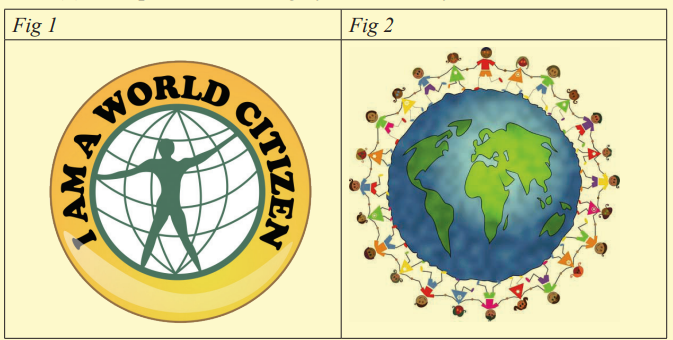
Your teacher will read to you a passage. Listen carefully
and do the activity that follows it.
What is globalisation?
Globalisation is a process of interaction and integration among the people,
companies, and governments of different nations, a process driven by
international trade and investment and aided by information technology.
This process has effects on the environment, on culture, on political
systems, on economic development and prosperity, and on humanphysical well-being in societies around the world.
Globalisation is not new, though. For thousands of years, people—and,
later, corporations—have been buying from and selling to each other
in lands at great distances, such as through the famed Silk Road across
Central Asia that connected China and Europe during the Middle
Ages. Likewise, for centuries, people and corporations have invested
in enterprises in other countries. In fact, many of the features of the
current wave of globalisation are similar to those prevailing before theoutbreak of the First World War in 1914.
Map of the Silk Road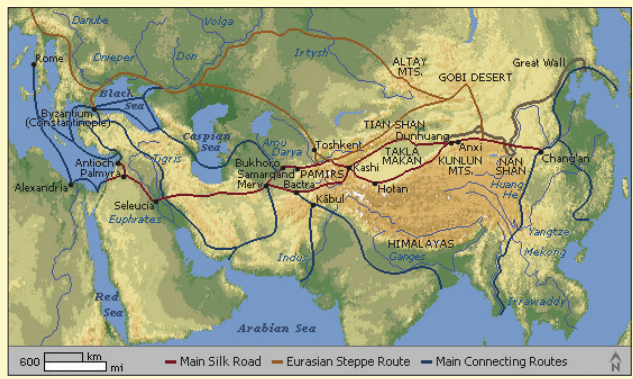
But policy and technological developments of the past few decades have
spurred increases in cross-border trade, investment, and migration so
large that many observers believe the world has entered a qualitatively
new phase in its economic development. Since 1950, for example, the
volume of world trade has increased by 20 times, and from just 1997
to 1999 flows of foreign investment nearly doubled, from $468 billion
to $827 billion. Distinguishing this current wave of globalisation from
earlier ones, author Thomas Friedman has said that today globalisation
is “farther, faster, cheaper, and deeper.”
This current wave of globalisation has been driven by policies that have
opened up economies domestically and internationally. In the years
since the Second World War, and especially during the past two decades,
many governments have adopted free-market economic systems, vastly
increasing their own productive potential and creating myriad newopportunities for international trade and investment.
Governments also have negotiated dramatic reductions in barriers to
commerce and have established international agreements to promote
trade in goods, services, and investment. Taking advantage of new
opportunities in foreign markets, corporations have built foreign factories
and established production and marketing arrangements with foreign
partners. A defining feature of globalisation, therefore, is an international
industrial and financial business structure.
Technology has been the other principal driver of globalisation. Advances
in information technology, in particular, have dramatically transformed
economic life. Information technologies have given all sorts of individual
economic actors—consumers, investors, businesses—valuable new tools
for identifying and pursuing economic opportunities, including faster
and more informed analyses of economic trends around the world, easy
transfers of assets, and collaboration with far-flung partners.
Globalisation is deeply controversial, however. Proponents of
globalisation argue that it allows poor countries and their citizens to
develop economically and raise their standards of living, while opponents
of globalisation claim that the creation of an unfettered international free
market has benefited multinational corporations in the Western world
at the expense of local enterprises, local cultures, and common people.
Resistance to globalisation has, therefore, taken shape both at a popular
and at a governmental level as people and governments try to manage
the flow of capital, labour, goods and ideas that constitute the current
wave of globalisation.
According to Wikipedia Free Encyclopaedia , the term “citizenship”
refers to an identity between a person and a city, state or nation and their
right to work, live and participate politically in a particular geographical
area.
When combined with the term “global”, it typically defines a person who
places their identity with a “global community” above their identity as
a citizen of a particular nation or place. The idea is that one’s identity
transcends geography or political borders and that responsibilities
or rights are or can be derived from membership of a broader class:“humanity”.
This does not mean that such a person denounces or waives their
nationality or other, more local identities, but such identities are given“second place” to their membership of a global community.
This does not mean that such a person denounces or waives their
nationality or other, more local identities, but such identities are given“second place” to their membership of a global community.
Activity 3
Discussion
Use the knowledge you have listened to from the listening passage.
Weigh the benefits and costs of globalisation. Write an essay. Compare
your essays with those of other classmates.
In general usage, the term globalisation may have much the same
meaning as “world citizen”. What do you think the phrase “world citizen”implies? Discuss the benefits and shortfalls of world citizenship.
Activity 4
Dialogue
Practise and act out the dialogue below with a classmate.
Joan: Hello David. Did you hear the recent government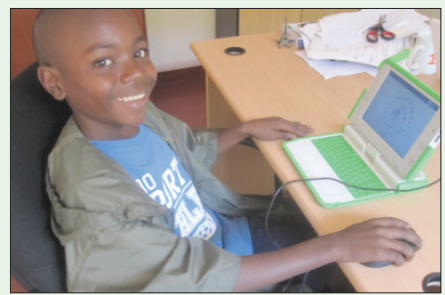
proposal of exploring the possibility of investing in video
conferencing to connect school children and teachers tothe outside world?
David: Oh yes, I did hear. What do you think? Wouldn’t it be
excellent if our government connected us to the global
world using the internet so that we could communicate
to each other and exchange ideas! Won’t that be so
wonderful?
Joan: Trust me. Whoever thought about this proposal indeed
thought very well for us school-going children and our
valued teachers. The proposal should be made into a
bill, tabled in parliament and passed quickly. There are
so many benefits we shall derive out of it, besides the
exchange of ideas you have mentioned!
David: I have already heard about the‘World Links for
Development’ programme which has helped to connect
schools, teachers and students of various countries
around the globe. In a televised dialogue with one of the
beneficiaries, I really envied him when he enumerated the
many benefits of global connections using the internet.
Joan: What did he precisely say?
David: Many things, but I am most certain this is the trend
we are becoming a part of. Besides, information
and communication technology itself has, of course,
changed dramatically around the world. There is more
of it; it is more powerful; it is faster; it is cheaper; it is
available to many more people; and many more people
know how to, and do use it as part of their daily lives.
The information and communication tools to make
connections between teachers and learners across national
borders have improved a lot, are very useful, sustainable,
environmentally friendly and even exciting.Joan: Wow, what an exciting world we are going to enjoy!
Activity 5
Discussion
Read through the dialogue again. Use it to discuss the benefits of
people around the world being linked to each other through the use of
the internet. Choose a secretary to share your views with the class forcomparison and further discussion of your opinions.
Activity 6
Research/Conducting a survey
Your teacher will take you to a tour agency. Find out the number of
people who leave Rwanda and those who come into Rwanda. Find out
from the tour staff the reasons why people leave Rwanda and why otherscome into Rwanda. Present your findings in a table.
‘People around the world travel to different countries.’ Use the table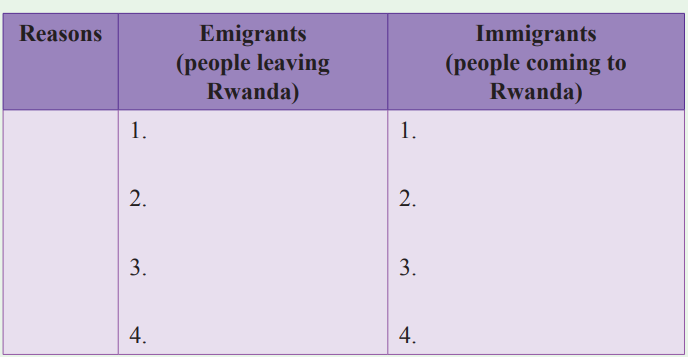
above to write a composition about the reasons and benefits these people
gain by travelling to these countries. Compare your essay with those ofyour classmates.
Activity 7
Essay writing
Some of you could be having family connections or friends in foreign
countries and may have visited other countries. Write a letter to your
pen pals or family friends informing them about your cultures, or any
other subject of your choice. Exchange your letters with your classmates.
Describing international trade
Activity 1
Discuss these questions
(a) Visit nearby shops and supermarkets. Or, look at the labels
on some of the products in your home that you use. On
some of the labels are written the countries where they are
made or manufactured. Describe the goods that you see on
the Rwandan markets that are not produced in our country.
Why do you think our country cannot produce those goods?
Do you know of some products and services that Rwanda
exports to other countries? Describe them.
(b) Look at cars. Most of them are manufactured in Europe and
Asia. Why do you think we cannot as per now manufacture
them in Rwanda?
(c) Do you have some suggestions you can recommend so that
Rwanda starts manufacturing the products she imports?
(d) Explain how Rwanda benefits by exporting her productsand services to other countries
Activity 2
Read the passage below carefully
Rwanda is predominantly a country of rural farmers, with few natural
resources. About 90% of the population is engaged in agriculture and
the remainder in the service sector. Tea and coffee are the main export
commodities of Rwanda trade. Since 2001, growth has been driven by
exports to the tune of 5% in the last five years.
Rwanda trade: Exports
Despite the setback caused by the 1994 genocide, Rwanda has spared
no efforts to put its economy back on track. The signing of an Enhanced
Structural Adjustment Facility with the International Monetary Fund
(IMF) in 1998 saw the beginning of privatisation, with support from the
World Bank. Rwanda’s exports include: tea; coffee; coltan; cassiterite;
iron ore; tin and animal hides.
Currently, Rwanda’s road to recovery and robustness is largely dependent
on the fluctuation in tea and coffee prices in the international market.
In 2000, coffee production stood at 14,578,560 tons and in 2002, tea
became the largest export item at 15,000 tons, translating into revenues
of US$18 million. Animal hides and tin ore are Rwanda’s other export
goods. Most of Rwanda’s exports go to China (9.1%), Germany (7.3%),
the US (4.5%), Thailand (8.6%) and Belgium (4.1%). The total revenues
generated by exports in Rwanda’s economy are around US$213 million
(2009 est.).
Rwanda Trade: Imports
Rwanda’s trade imports are far larger than its exports and are in the
region of $786 million (2009 est.). The main countries that goods are
imported from include Kenya (15%), Uganda (13.1%), China (6.2%),Belgium (5.2%), and Germany (4.5%).
France and Israel are also countries that Rwanda imports from. The main
imports are: machinery and equipment; steel; cement and construction
material; Petroleum products and foodstuffs.
The US is an important exporter to Rwanda, accounting for almost $10
million in imports annually since 1990-93, and over $40 million in
1994 and 1995. In 2007, the amount rose to approximately $17 million,
a 20% increase over the 2006 level. Being a member of the Common
Market for Eastern and Southern Africa (COMESA) and the East African
Community, roughly 90% of Rwanda’s imports come from COMESAcountries and 34% from other African countries.
Exercise
Answer these questions about the passage you have read
1. How does Rwanda’s being predominantly an agricultural economy
affect the country?
2. What do you think can be done to improve the agricultural sector so
that Rwandan agricultural produce can become more competitive
on the international market?
3. Describe Rwanda’s main export commodities.
4. Explain the contribution of coffee production to Rwanda’s
economy.5. Compare Rwanda’s imports and exports.
Activity 3
Data presentation and information transfer
Use the passage to draw pie charts showing Rwanda’s imports and
exports to other countries as far as her international trade is concerned.
Choose a secretary to present while interpreting your pie charts to the
class
The present perfect tense
Activity 1
Study these two sentences carefully with a classmate. Explain the
meanings of the two sentences.
(a) Rwanda is a predominately agricultural economy.(b) Rwanda has been a predominately agricultural economy.
Exercise
Multiple choice
Rewrite the sentences by choosing the correct word from the
brackets.
1. Who among the three workers (has/have) absconded from duty?
2. The girl (has/have) gone for a study tour at the National Statistics
of Rwanda offices.
3. Tea and coffee (has/have) been Rwanda’s main export commodities
for quite a long time.
4. Despite the setback caused by the 1994 genocide, Rwanda (have/
has) spared no efforts to put its economy back on track.
5. The signing of an Enhanced Structural Adjustment Facility with
the International Monetary Fund (IMF) in 1998 (have/has) seen
the beginning of privatisation, with support from the World Bank.
6. Rwanda’s road to recovery and robustness (have/has) largely
been dependent on the fluctuations in tea and coffee prices in the
international market.
7. The total revenues generated by exports in Rwanda’s economy
(has/have) been around US$213 million.
8. Rwanda’s trade imports (has/ have) been far larger than its exports.
9. Machinery and equipment (has/have) been Rwanda’s main import
products.
10. Being a member of the Common Market for Eastern and Southern
Africa (COMESA) and the East African Community (have/has)boosted Rwanda economy.
Describing international organisationsRwanda belongs to quite a number of international organisations.
Activity 1
Research
Use the internet of your school to identify the international organisations
that Rwanda belongs to. Also, find out how Rwanda benefits by being
a member of these international organisations. Report back to your
classmates. Compile a report about your findings. Write an essay andcompare it with other classmates
Describing sources of income
Activity 1
Graphic data presentation and information transfer
The following graph is a broad analysis of Rwanda’s sources of income
extracted from the source: Global EDGE. Study the graph carefully
Source: global EDGE
Activity 2
Present the data in the graph in a pie chart. Use the data to write aparagraph describing Rwanda’s sources of income
Activity 3
Research
If 90% of the Rwandan population work in agriculture, and it accounts
for 33.12% of the economy, carry out research using the internet or
consult relevant textbooks on the contribution of other sectors to
Rwanda’s economy. Draw a pie chart showing Rwanda’s sources of
revenue from your research. Describe the information in your pie chart
about Rwanda’s sources of revenue and compare your pie chart withthose of other classmates.
Multinational trade
Activity 1
Discussion
Let us study the meaning of the three words multi meaning many;
national meaning countries; and trade referring to the exchange of
commodities. When joined together, the term multinational trade
means many countries trading amongst themselves; it is also called
overseas trade.
1. Identify multinational corporations operating in Rwanda and their
products
2. Compare the size of the companies, staff, technology and
products of multinational corporations from Europe, Asia, North
America and South America operating in Rwanda with indigenous
companies or private firms in developing countries like Rwanda.Present your work in an essay.
3. Use the photographs in Fig. 1 and Fig. 2 above to account for
the emerging multinational corporations in Rwanda and other
African countries.
Activity 2
Discussion
Look at factors of production like technological advancement, among
many others.
Explain how the differences in the factors of production account for the
goods and services manufactured between developing countries and
developed nations, such as those in Europe, Asia and America.
What do you think are the effects of multinational corporations on
indigenous firms in developing countries like Rwanda?
Choose a secretary to present your findings to the class for furtherdiscussion and comparison of your answers.
Describing multinational companies
Activity 1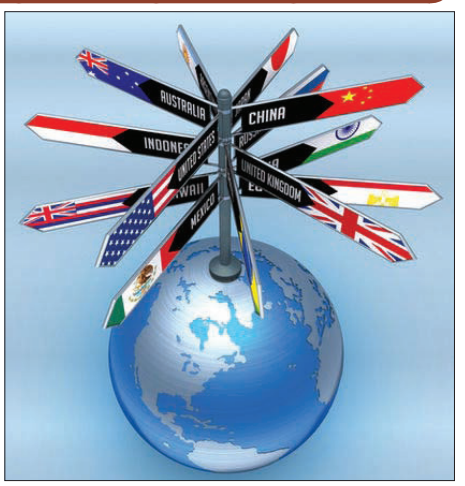
Research
Visit any multinational company operating in Rwanda. (Remember to
go with your valid school identification card.) Inform the management
or authorities that you are on a study visit to carry out research about
that multinational corporation.
Ask them to give you information about the products, operation and
reasons why they chose to extend their trade activities to Rwanda, plus
any other additional information that may be relevant for your research.
Make notes as you carry out your research.
After, organise your notes and write a detailed report about the
multinational corporation you visited. Organise it in headings,
paragraphs and numbering (scan and skim through some of the passages
in this textbook to help you do this activity). Share your findings withyour classmates.
Describing a multinational company in
Rwanda
Activity 1
Read the passage carefully
Rwanda to export cement as new plant boosts production
Anastase Murekezi, the Rwanda Prime Minister (R), on a guided tour of the new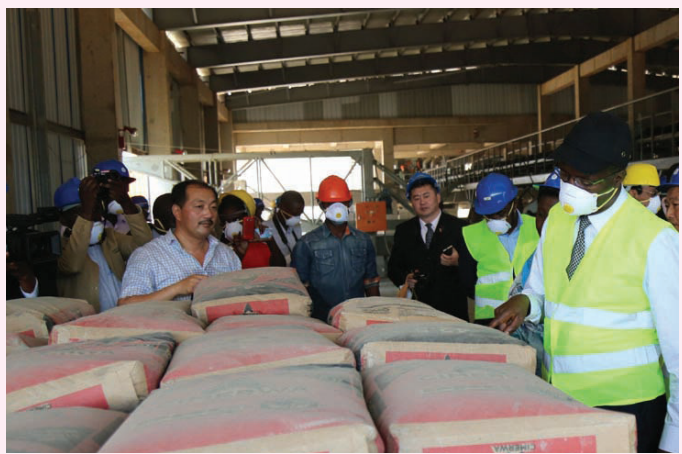
CIMERWA cement plant
(Photo credit: Timothy Kisambira)
Rwanda’s only cement manufacturer, CIMERWA Ltd, unveiled a new
plant expected to increase production and boost export revenues.
The new state-of-the-art plant in Muganza sector, Rusizi district, was
inaugurated by the Prime Minister, Anastase Murekezi.
The factory, worth $170 million, has the capacity to produce six timesthe current capacity of 100,000 tonnes per year
Speaking at the launch, Murekezi said the new plant presents
an opportunity for the country to start exporting cement to its
neighbours, while creating employment opportunities for Rwandans.
Increasing production capacity, according to Murekezi, makes it possible
for the plant to export up to 30% of total production (200,000 tonnes)
to other countries, such as DR Congo and Burundi.
This, according to the Prime Minister, will help drive sustainable
economic development and poverty reduction.
And, most importantly, exporting cement to neighbouring countries
means Rwanda will be able to reduce its trade deficit gap with at least
an additional $92 million per year in foreign revenues, according to the
National Bank of Rwanda (NBR).
Rwanda’s current cement demand is estimated at about 450,000 tonnes
per year.
However, demand across the borders in DR Congo and Burundi is more
than 900,000 tonnes.
Legodi Busisiwe, the Chief Executive Officer of CIMERWA Ltd, said
the new plant would play a critical role in enhancing competitiveness
of the local construction sector through reduced logistical costs.
“The new plant seeks to bring on board high quality products that will
help boost the capacity of the country’s infrastructure,” he said.
Busisiwe hailed the country’s new investment code as a step forward in
attracting more investments into the country.
The new plant comes at a time when the government is trying to narrow
the country’s trade deficit gap by boosting its exports to the tune of atleast 28% every year.

CIMERWA cement factory, Muganza sector, Rusizi district
The country’s trade deficit improved by 6.0% from $722.56 million in
2014 to $6779.22 million during the first five months of 2015.
There is hope that exporting cement could further narrow this gap.
Bringing down cement prices
Meanwhile, there is hope among market players that increasing cement
production will reduce the high prices of CIMERWA cement in the
country.
Currently, one bag of cement costs FRW 11,000, which is higher than
imported cement that goes for between FRW 8,500 and FRW 9,000.
Ephraim Karekezi, a Kigali-based engineer, believes the new plant
will help bring down cement prices.
“The cost of construction is high simply because of high prices of raw
materials, including cement. Therefore, the new cement plant offers
sector players the greenlight in addressing the question of affordabilityand propelling the sector towards economic excellence,” said Karekezi.

CIMERWA cement bags ready for the market
Figures from the National Institute of Statistics of Rwanda indicate there
has been a significant increase in the construction sector’s contribution
to the national economy.
The sector contributed FRW 109 billion to GDP during the first quarter
of 2015, up from FRW 106 billion in the same period of 2014.
Real estate activities contributed FRW 91 billion to the national economy,
up from FRW 83 billion during the first quarter of 2014.
More employment opportunities
Frederick Harerimana, the mayor of Rusizi district, said the new plant
offers immense opportunities to the construction industry and the
employment sector.
According to Vivens Kalinganire, the human resource manager at
CIMERWA, the new factory is expected to create more than 100 new
jobs in addition to the current 126 employees by the end of the year.Source: The New Times, by Peterson Tumwebaze. Published 19 August 2015
Exercise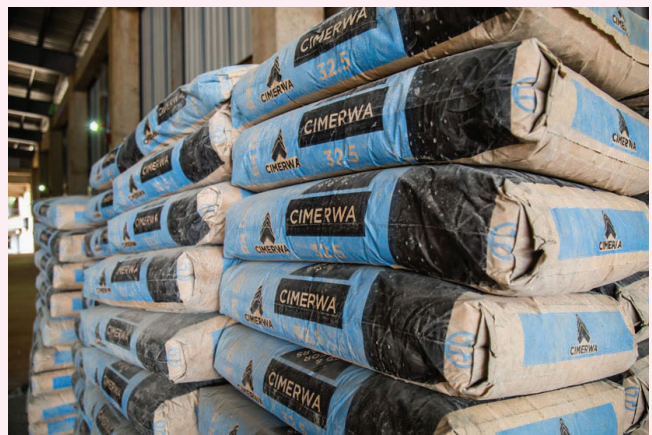
Answer these questions
1. How will Rwanda benefit from the new cement plant?
2. In your own words, explain what you understand by the phrase
‘trade deficit gap’.
3. Describe how the cement plant will reduce the trade deficit gap.
4. Using your knowledge of Economics, explain how the increase
in cement production at CIMERWA will reduce the high prices
of cement.
5. How is the cement plant poised to benefit from the significant
increase in the construction sector of the national economy?
Present perfect passive voice
Activity 2
Look at these sentences carefully.
(a) CIMERWA, the new factory, has created more jobs this year.
(b) New jobs have been created this year by CIMERWA, the
new factory.
What do you realise about the tenses and the subject clauses of thesentences above?
Exercise
Gap filling
Rewrite the sentences as instructed without changing the
meaning.
1. The new cement plant has boosted our economy.
(End: …… the new cement plant.)
2. The factory workers have manufactured 100 types of cars.
(Start: 100 types ……………)
3. The CEO has announced new jobs in his company.
(End: ……….CEO.)
4. The new trade tariffs have barred many industries from joining
the multinational trade.
(Start: Many industries ……………)
5. The new manager has instructed her workers to study the
market trends and adjust their systems of operation and
production.
(End: …………. new manager.)
Sentence completion
Complete sentences 6-8 meaningfully.
6. ……….. by the construction workers.
7. The new directive has been ………………
8. Indigenous firms have been ………. by the multinationalcorporations.
